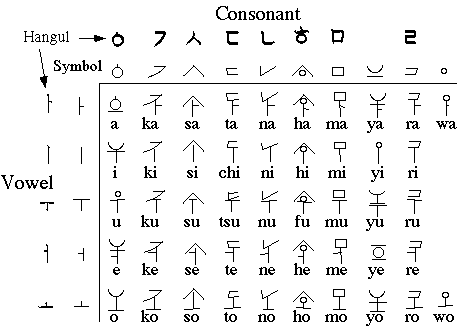
The Japanese language is written and read using a variety of different scripts: Chinese characters, two forms of a syllabary, Roman letters, and Arabic numerals. All these various types of scripts originated elsewhere and have been adopted and adapted by the Japanese over hundreds of years.
The earliest time Japanese used a script was in the 4th or 5th century AD, when they adopted Chinese characters. Yet, during the Tokugawa Era (16001868) some Japanese nationalists, feeling embarrassed about adopting and adapting scripts from other cultures, fabricated a story that the Japanese people invented in antiquity a script of their own, called jindai moji ('script of the age of the gods'). There are at least a dozen varieties of such presumed indigenous Japanese scripts, all of which were "discovered" in modern times, and whose creation and use are poorly documented, as can be seen in book titles such as The Riddle of Jindai Moji (Jindai Moji no Nazo) (Fujiyoshi 1979) and Excavation of Japanese Graphs (Nippon Ji no Hakkutsu) (Sakai 1967).

One variety of jindai moji that is often cited in books on Japanese writing is shown in Figure 18-1. This script is clearly a copy of the Korean phonetic script, Han'gul, which was created by King Sejong in the mid-15th century (chap. 13). Several jindai moji (e.g., those for mu and to) are identical in shape and sound values to their Han'gul models, and others are distorted versions. Packaging a consonant letter with a vowel letter into a CV block is also modelled on Han'gul, except that the shapes of C letters are slightly altered, and the vowel letters are placed under the consonant letters. In another version of this Japanese script, the vowel letters are placed on the right side of the consonant letters. Han'gul uses one or the other CV arrangement, depending on the types of vowels.
Apparently, this and other fake scripts were taught during the height of Japan's nationalism before World War II and were cited in Japanese scholarly books on the history of writing. Today, when they are mentioned, their fake origins are pointed out...